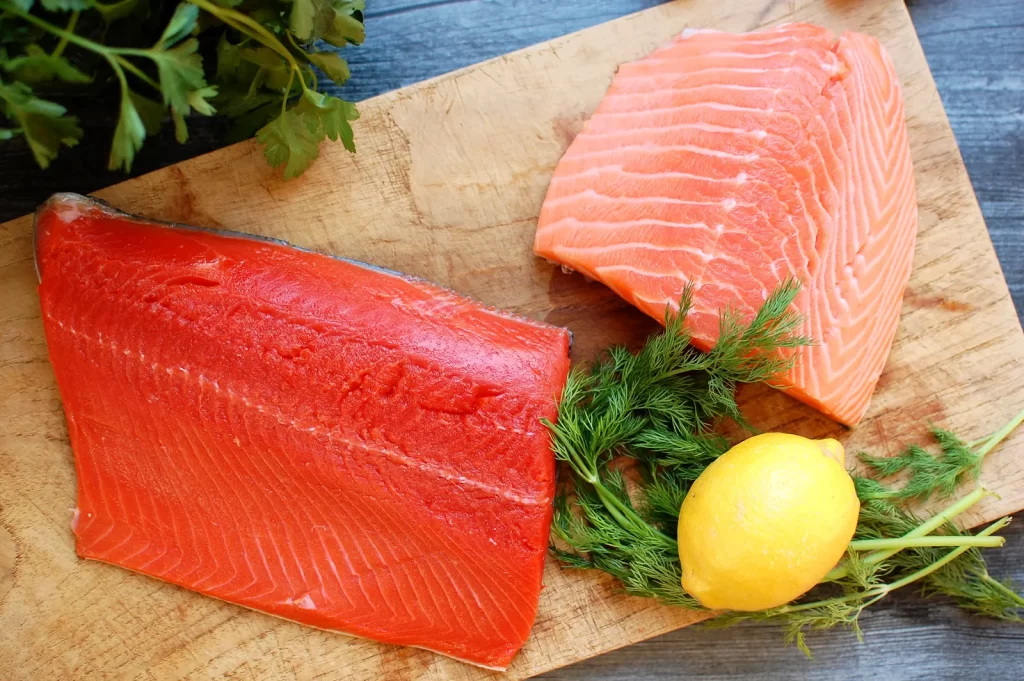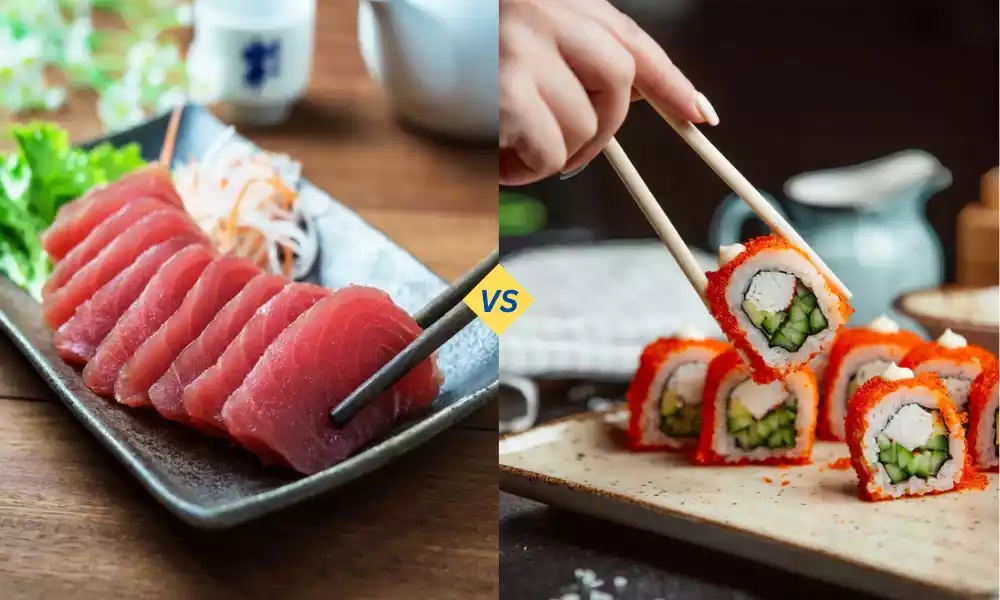Prawns and shrimp are two types of seafood that are often confused due to their similar appearance, but they belong to different suborders of decapods. Prawns, part of the suborder Dendrobranchiata, are typically larger and have a slightly sweeter taste compared to shrimp, which belong to the suborder Pleocyemata. Both are rich in protein and low in fat, making them a popular choice in various cuisines worldwide.
They can be cooked in a myriad of ways, such as grilled, sautéed, or included in dishes like paellas, curries, and salads. Despite their differences in size and subtle variations in taste and texture, prawns and shrimp are often used interchangeably in recipes, adding a delightful seafood flavor to any dish.
Explanation of Prawn
Prawns are a type of shellfish belonging to the suborder Dendrobranchiata, commonly found in fresh and saltwater environments. They are closely related to shrimp but have some distinct differences. Prawns are generally larger than most shrimp species, and they have a slightly different anatomical structure, particularly in their gills and brood areas.
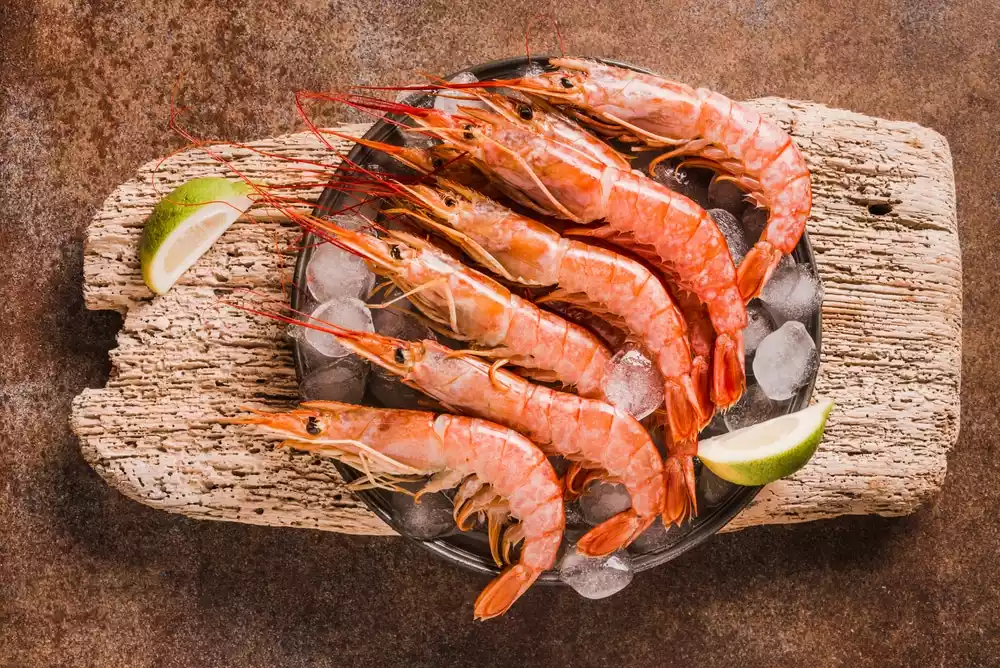
In terms of culinary use, prawns are known for their sweet, delicate flavor and firm texture. They are a versatile ingredient in many cuisines, often featured in dishes such as stir-fries, curries, pasta, and as a standalone dish, either grilled, fried, or poached. Prawns are also a nutritional powerhouse, rich in protein, low in fat, and a good source of omega-3 fatty acids, vitamins, and minerals, making them a healthy addition to a balanced diet.
The size and appearance of prawns can vary based on their species and the waters they inhabit. The terms “prawn” and “shrimp” are used interchangeably in many regions, but in some areas, particularly in the United Kingdom and Commonwealth countries, the term “prawn” is more commonly used to describe these larger, sweet-tasting crustaceans.
Explanation of Shrimp
Shrimp are small, decapod crustaceans found in a variety of aquatic environments, including both fresh and saltwater. They belong to the suborder Pleocyemata, and are characterized by their slender bodies and long antennae. Shrimp are distinguished from prawns, their close relatives, by certain anatomical differences, such as the structure of their gills and the way their bodies are segmented.
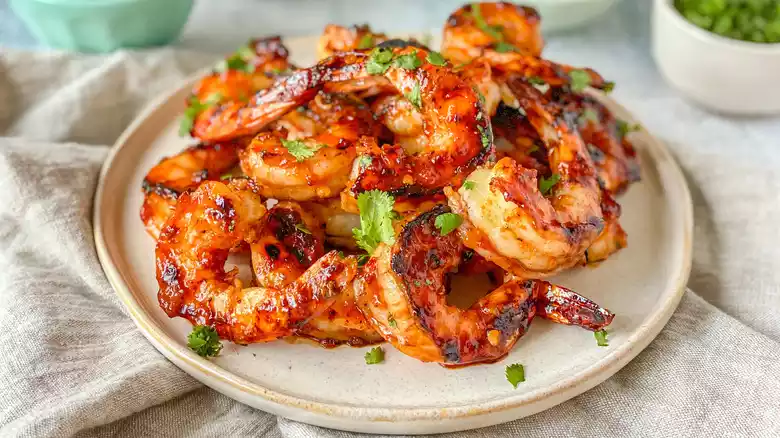
Culinary-wise, shrimp are a highly popular seafood around the world, known for their tender texture and mild, slightly sweet flavor. They are incredibly versatile in the kitchen, used in a wide array of dishes including stir-fries, salads, pastas, and soups. Shrimp can be cooked in various ways, such as grilling, boiling, frying, or baking. They are often served peeled and deveined, though in some dishes they are cooked with their shells on to enhance flavor.
Nutritionally, shrimp are low in calories and fat, yet high in protein and several important nutrients, including iodine, omega-3 fatty acids, and antioxidants. They are also a source of cholesterol, which has led to some dietary caution, although recent studies suggest that the cholesterol in shrimp may not significantly affect the cholesterol level in the blood for most people.
In many regions, the terms “shrimp” and “prawn” are used interchangeably, although in some places, like the United States, “shrimp” is the more commonly used term for these small, tasty crustaceans.
Importance of understanding their differences
Understanding the differences between prawns and shrimp is important for several reasons, especially in culinary, nutritional, and ecological contexts:
- Culinary Precision: For chefs and culinary enthusiasts, knowing the distinctions can aid in selecting the right type for specific dishes. The subtle differences in flavor and texture between prawns and shrimp can influence the outcome of a recipe.
- Cultural and Regional Significance: In different parts of the world, the terms “prawn” and “shrimp” are used differently. Understanding these terms helps in communicating accurately about recipes or seafood choices in international or culturally diverse contexts.
- Nutritional Knowledge: While both are healthy seafood options, there might be slight differences in their nutritional profiles. People who are managing dietary restrictions or allergies can make more informed choices by understanding these differences.
- Allergen Awareness: For individuals with shellfish allergies, it’s crucial to understand the specific allergens in prawns and shrimp, as reactions can vary depending on the type of shellfish.
- Sustainable Seafood Choices: Knowing the species and their habitats can guide consumers in making environmentally responsible seafood choices. Different species of prawns and shrimp may have varying impacts on ecosystems based on their farming or fishing practices.
- Economic Considerations: In some markets, prawns might be more expensive than shrimp (or vice versa), reflecting factors like size, scarcity, and demand. Consumers and businesses benefit from understanding these differences for budgeting and pricing.
- Culinary Diversity and Experimentation: Appreciating the unique qualities of each can inspire chefs and home cooks to experiment with a broader range of seafood dishes, exploring diverse culinary traditions and flavors.
- Educational Value: For students, chefs, and seafood enthusiasts, understanding these differences is part of a broader education about marine life, cooking, and nutrition.
Recognizing the differences between prawns and shrimp enhances culinary accuracy, supports informed nutritional choices, contributes to sustainable seafood consumption, and enriches the overall cooking and dining experience.
Comparison table of Prawn vs Shrimp
Here’s a comparison table highlighting the key differences between prawns and shrimp:
| Aspect | Prawn | Shrimp |
| Size | Generally larger | Usually smaller |
| Flavor | Slightly sweeter, richer | Milder, more delicate |
| Texture | Firmer, meatier | Softer, more tender |
| Culinary Uses | Often used in robust dishes like curries and grills | Popular in delicate preparations like stir-fries, pastas |
| Cooking Time | Can withstand longer cooking, good for soups and stews | Best cooked quickly to retain tenderness |
| Price | Often more expensive, especially larger varieties | Typically more affordable |
| Availability | Widely available, with variations depending on the region | Very common in various sizes and forms (fresh, frozen) |
| Nutrition | High in protein, low in fat, source of omega-3s | Similar nutritional profile, slightly lower in cholesterol |
| Allergen Concern | Common allergen, similar to other shellfish | Same as prawns, caution for those with shellfish allergies |
| Sustainability | Depends on farming/fishing practices; some species are overfished | Same concerns; choice of sustainable sources is important |
This table provides a general overview for culinary purposes, emphasizing the similarities and differences that might influence a consumer’s or chef’s choice between prawns and shrimp in various dishes.
Culinary Uses of Prawn and Shrimp
Prawns and shrimp are highly versatile in the culinary world, used in a wide range of dishes across various cuisines. Their similar taste and texture make them interchangeable in many recipes.
Here are some common culinary uses for both:
- Stir-Fries: Both prawns and shrimp are popular in stir-fry dishes. They cook quickly and can absorb the flavors of the sauce and vegetables.
- Curries: In Asian and Indian cuisines, prawns and shrimp are often added to curries. Their mild flavor complements the spices used in these dishes.
- Pasta and Risotto: In Italian cuisine, they are frequently used in pasta dishes and risottos, providing a subtle seafood flavor.
- Grilled: Both can be grilled, either on skewers or directly on the grill, and are often served with lemon, garlic, or herb-infused butter.
- Shrimp Cocktail: A popular appetizer where shrimp are boiled and then chilled, typically served with a tangy cocktail sauce.
- Paellas: In Spanish cuisine, both prawns and shrimp are key ingredients in paellas, adding both flavor and visual appeal to this rice dish.
- Soups and Bisques: They are often used in soups and bisques, adding a rich seafood flavor. Examples include shrimp bisque and Thai shrimp soup.
- Salads: Both can be tossed into salads, either cooked or cold, adding a protein-rich component.
- Sandwiches and Wraps: In sandwiches and wraps, they provide a light, flavorful filling, often paired with mayonnaise, herbs, and spices.
- Sushi and Sashimi: In Japanese cuisine, shrimp is commonly used in sushi and sashimi. Prawns are also used but less commonly due to their size.
- Fried: Both can be breaded and fried, served as an appetizer or main dish, often accompanied by dipping sauces.
- Poached: They can be poached in seasoned water or broth, resulting in a tender and flavorful seafood addition to various dishes.
Their low-fat content and high protein make them a healthy choice, and their quick cooking time makes them convenient for a variety of recipes. Whether used as the main protein or as an addition to a dish, prawns and shrimp are a staple in seafood cuisine.
Cooking Techniques
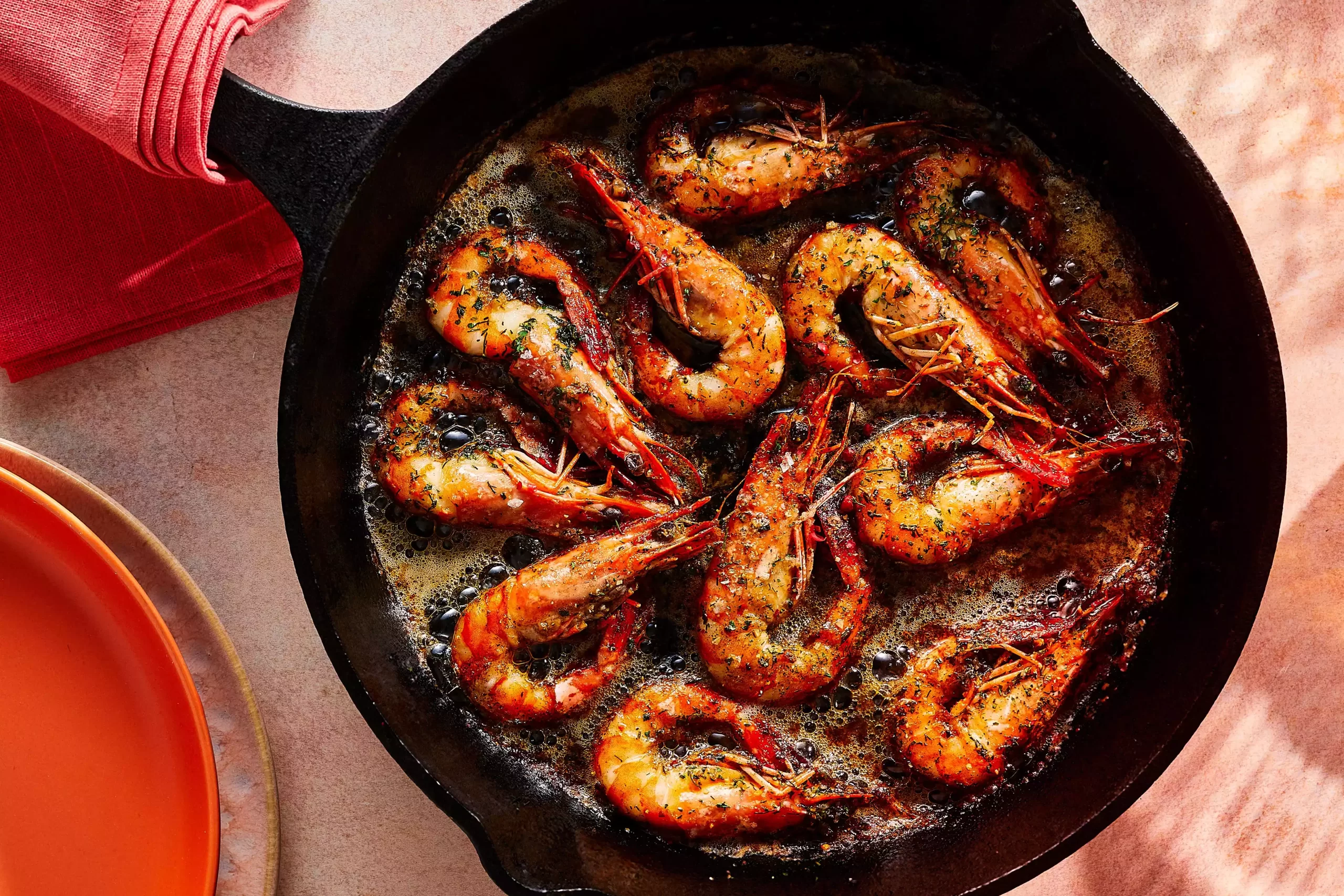
Prawns and shrimp are adaptable to a variety of cooking techniques, each bringing out different flavors and textures. Here are some popular methods:
- Boiling: A quick and simple method. Boiled prawns or shrimp are often used in salads, cocktails, or served with dipping sauces.
- Grilling: Imparts a smoky flavor. They can be grilled with shells on to retain moisture or skewered for easy handling. Marinating beforehand adds extra flavor.
- Sautéing: Quick and versatile. Sautéed prawns or shrimp can be added to pasta, rice dishes, or stir-fries. Cooking quickly in butter or oil over high heat ensures they remain tender.
- Frying: Both deep-frying and pan-frying are popular. Battered or breaded prawns and shrimp become crispy on the outside while staying juicy inside.
- Baking or Roasting: Roasting in an oven brings out a rich, concentrated flavor. They can be baked with seasonings, herbs, butter, or oil.
- Steaming: Steaming is a gentle way to cook them, preserving their natural sweetness and tenderness. Steamed prawns or shrimp can be served with dips or added to other dishes.
- Poaching: Poaching in flavored liquid (like court-bouillon) is a gentle cooking method that infuses them with subtle aromatics.
- Broiling: This method is great for quick, high-heat cooking that adds a bit of char and caramelization, enhancing the flavor.
- Stir-frying: Common in Asian cuisine, this method cooks them quickly with vegetables and sauce, retaining their crisp texture.
- En Papillote (Cooking in Paper): Cooking prawns or shrimp in a parchment paper parcel with herbs and seasonings steams them in their juices, infusing flavor while keeping them moist.
Health Benefits of Prawn and Shrimp
Prawns and shrimp offer numerous health benefits, making them a valuable addition to a balanced diet. Here are some of the key health benefits:
- High-Quality Protein: Both are excellent sources of high-quality protein, which is essential for muscle building and repair. Protein also plays a vital role in many bodily functions and can aid in weight management.
- Low in Calories: They are low in calories, making them a great option for those looking to maintain or lose weight while still getting essential nutrients.
- Rich in Omega-3 Fatty Acids: Omega-3s are crucial for heart health, helping to reduce the risk of heart disease and stroke. They also contribute to brain health.
- Contains Key Nutrients: They are sources of several important vitamins and minerals, including iodine, which is important for thyroid function and overall metabolism, and selenium, an antioxidant that helps combat free radicals.
- Source of Antioxidants: Shrimp, in particular, contains a carotenoid called astaxanthin, which has antioxidant and anti-inflammatory properties.
- Low in Fat: Both prawns and shrimp are low in fat, including saturated fat, making them a heart-healthy food choice.
- Good for Bone and Brain Health: They contain phosphorus, copper, and magnesium, which are important for bone health. Additionally, the omega-3 fatty acids, iodine, and vitamin B12 found in them are beneficial for brain health.
- May Benefit Blood Health: The astaxanthin in shrimp may help improve blood cholesterol levels, and the iron in prawns is important for healthy blood and oxygen transport.
- Promotes Skin Health: The high zinc content in prawns and shrimp is essential for healthy skin and may help speed up wound healing and create collagen.
- Low in Mercury: Compared to many other types of seafood, prawns and shrimp are typically low in mercury, making them a safer choice for pregnant women and children in moderate amounts.
Side-effect of Prawn and Shrimp
While prawns and shrimp are nutritious and popular seafood choices, there are some potential side effects and considerations to keep in mind, particularly for certain individuals:
- Allergic Reactions: As mentioned earlier, prawns and shrimp can cause allergic reactions in individuals with shellfish allergies. These reactions can range from mild symptoms like hives and itching to severe anaphylaxis.
- Cholesterol Content: Both prawns and shrimp are high in dietary cholesterol. While dietary cholesterol’s impact on blood cholesterol levels is less than once thought, some people, particularly those with certain medical conditions, may need to monitor their intake.
- Purines: They contain purines, which break down into uric acid. High levels of uric acid can exacerbate conditions like gout and kidney stones.
- Food Poisoning: Improper handling, storage, or cooking of prawns and shrimp can lead to foodborne illnesses. Symptoms can include stomach cramps, nausea, vomiting, diarrhea, and fever.
- Contaminants and Toxins: Depending on their habitat, prawns and shrimp can accumulate harmful substances like heavy metals, polychlorinated biphenyls (PCBs), and dioxins. Consuming contaminated seafood can pose health risks.
- Antibiotics and Chemicals: In some farming practices, antibiotics, pesticides, and other chemicals may be used, which can remain as residues in the seafood. These may have various health implications.
- Sodium Content: Some processed prawns and shrimp, especially those that are pre-cooked or canned, can be high in sodium, which is a concern for individuals with high blood pressure.
- Mercury Levels: While generally low in mercury compared to other seafood, consuming them in excessively high amounts could still pose a risk of mercury exposure, though this is less of a concern with prawns and shrimp than with larger fish.
Price and Availability
The price and availability of prawns and shrimp can vary depending on several factors:
- Geographic Location:
-
- In coastal regions where prawns and shrimp are caught or farmed locally, they tend to be more readily available and less expensive.
- Inland areas might have higher prices due to transportation costs.
- Type and Size:
-
- Larger varieties, like jumbo prawns, are usually more expensive.
- Smaller shrimp tend to be more affordable.
- Certain species, like Tiger prawns or Pacific white shrimp, might have different price points based on demand and rarity.
- Fresh vs. Frozen:
-
- Fresh prawns and shrimp often command a higher price due to their perceived quality and shorter shelf life.
- Frozen varieties are generally more affordable and widely available in most supermarkets.
- Organic and Sustainable Options:
-
- Organically farmed or sustainably caught prawns and shrimp are typically more expensive due to the higher costs of sustainable farming and fishing practices.
- These options are increasingly available but might not be as widespread as conventionally sourced products.
- Seasonal Factors:
-
- Prices can fluctuate with the fishing seasons. Certain times of the year might offer lower prices due to higher catches.
- Off-season products might be more expensive.
- Global Market Dynamics:
-
- Import tariffs, trade regulations, and international demand can influence prices.
- Local market conditions and currency exchange rates also play a role.
- Retail Outlets:
-
- Prices can vary significantly between different retailers. Specialty seafood markets might offer higher quality products at a premium price.
- Supermarkets and discount stores generally provide more competitive pricing, especially for frozen products.
- Online Availability:
-
- Online retailers offer a wide range of prawns and shrimp, sometimes including exotic or hard-to-find varieties. Prices online can vary, and shipping costs need to be considered.
The price and availability of prawns and shrimp are influenced by location, type, size, freshness, sustainability, season, global market conditions, and where they are purchased. Consumers often have a range of options to choose from based on their budget and preference for quality.
Similarities between Prawn vs Shrimp
Prawns and shrimp share several similarities, making them often interchangeable in culinary contexts.
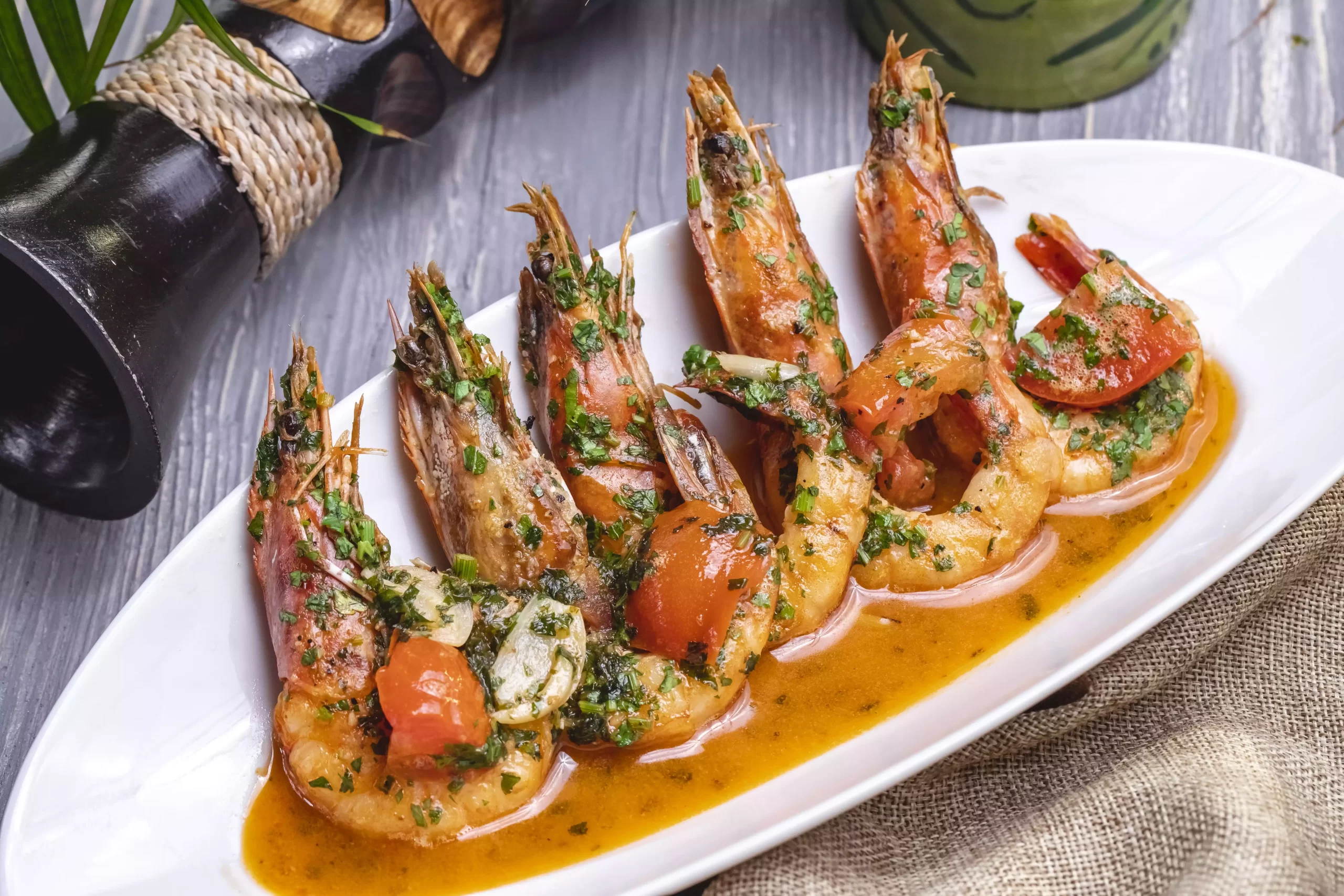
Here are some of the key similarities:
- Appearance: Both prawns and shrimp have a similar overall appearance with elongated bodies, a flexible tail, and a segmented shell. They also both have long antennae and slender legs.
- Habitat: Both can be found in aquatic environments. While prawns are more common in both fresh and saltwater, shrimp primarily inhabit saltwater, with some species found in freshwater.
- Diet: Both are omnivorous, feeding on a mix of plant and animal matter, which contributes to their similar taste profiles.
- Cooking Methods: Prawns and shrimp can be prepared using similar cooking methods, including boiling, grilling, frying, and sautéing. They are both popular in a wide range of cuisines and dishes like curries, pastas, stir-fries, and salads.
- Nutritional Value: Both are rich in protein and low in calories, making them a healthy choice for many diets. They are also sources of various nutrients, including omega-3 fatty acids, vitamins, and minerals.
- Flavor Profile: Prawns and shrimp have a similar mild, slightly sweet taste, which is why they are often used interchangeably in recipes.
- Market Availability: Both are widely available in markets around the world, sold fresh, frozen, or pre-cooked, and can be found in various sizes.
- Culinary Versatility: Both prawns and shrimp are versatile in culinary use and are enjoyed in a variety of culinary traditions across the globe.
Despite these similarities, Prawns and shrimp are different in their biological classification and have some distinct physical characteristics. In a culinary context, these differences are often subtle enough that prawns and shrimp can substitute for each other in most recipes.
Conclusion
Prawns and Shrimp are similar yet distinct seafood options, each with unique characteristics. Prawns, belonging to the suborder Dendrobranchiata, are generally larger with a straighter body and a slightly sweeter taste, whereas shrimp, from the suborder Pleocyemata, are smaller with a more curved body and a milder flavor. Both are highly versatile in culinary uses, adaptable to various cooking methods, and rich in protein and nutrients.
While they can often be used interchangeably in recipes, subtle differences in taste and texture may influence the choice depending on the dish. Despite these differences, both prawns and shrimp are popular worldwide, offering a range of health benefits when included in a balanced diet, though considerations for allergies and dietary preferences are important.

